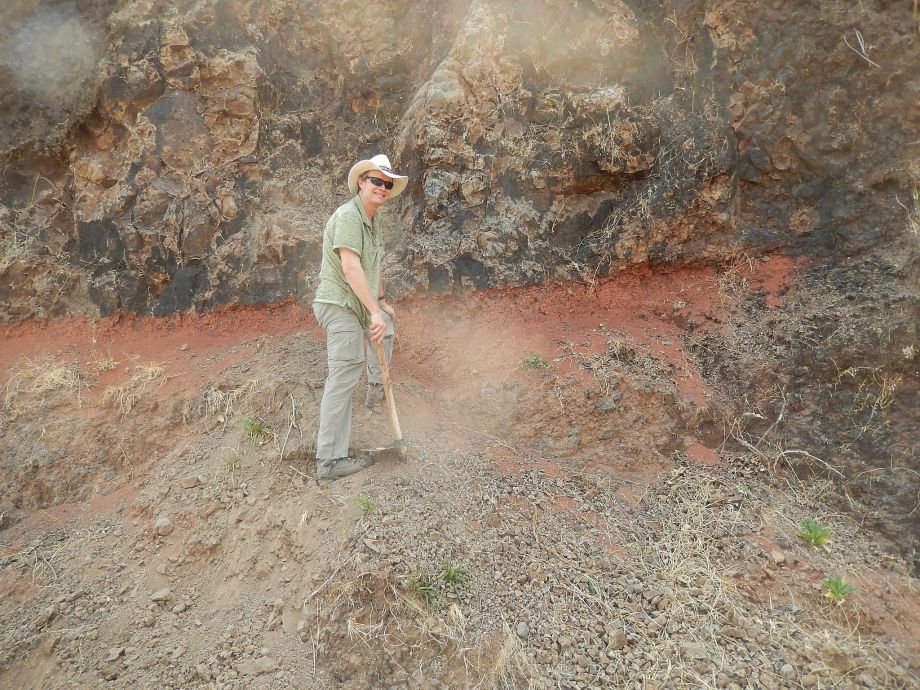-
Tips for becoming a good boxer - November 6, 2020
-
7 expert tips for making your hens night a memorable one - November 6, 2020
-
5 reasons to host your Christmas party on a cruise boat - November 6, 2020
-
What to do when you’re charged with a crime - November 6, 2020
-
Should you get one or multiple dogs? Here’s all you need to know - November 3, 2020
-
A Guide: How to Build Your Very Own Magic Mirror - February 14, 2019
-
Our Top Inspirational Baseball Stars - November 24, 2018
-
Five Tech Tools That Will Help You Turn Your Blog into a Business - November 24, 2018
-
How to Indulge on Vacation without Expanding Your Waist - November 9, 2018
-
5 Strategies for Businesses to Appeal to Today’s Increasingly Mobile-Crazed Customers - November 9, 2018
How volcanoes finished off the dinosaurs
The findings, described in the journal Science, bind together two long-held theories about what killed off the dinosaurs (and many other species).
Advertisement
The effect of the asteroid hit may have increased the volcanic eruptions’ speed, which makes it likely that both incidents played a role in the extinction of the dinosaurs.
About 66 million years ago, an asteroid that was 6 miles (9.6 kilometres) long smashed into the Earth which led to the mass extinction of the dinosaurs, or at least this is what most scientists say.
So the researchers traveled to India to the Deccan traps, where lava flows piled high reach about 3,000 meters in thickness, Renne said.
Within 50,000 years of the impact, the Deccan Traps volcanoes doubled their output, blanketing the Earth with sulphurous gas and dust.
According to a theory published earlier this year by Mark Richards, a colleague of Renne’s at Berkeley, the shock waves from Chicxulub – equivalent to a magnitude-11 natural disaster – may have agitated a plume of mantle material that fuelled the Deccan traps from below.
“It is going to be basically impossible to ascribe actual atmospheric effects to one or the other”, said Renne, “They both happened at the same time”. Renne is director of the Berkeley Geochronology Center and a professor-in-residence at UC Berkeley. However, later, when scientists came to know about the dating of a formation of Deccan Traps, it was found that the basaltic lava flood started years before the occurrence of the cataclysmic impact. The dating shows that the lava began spreading before the asteroid impact. “The scenario we are suggesting-that the impact triggered the volcanism-does in fact reconcile what had previously appeared to be an unimaginable coincidence”, Richards said in a press release.
“I was sceptical about the idea that the impact and the volcanism were related – the notion that somehow an impact could exert such a force half way around the planet”, said Professor Renne.
For years the impact of the fatal blow that wiped out the dinosaurs was debated by scientist. Over the course of 420,000 years following the asteroid, they concluded, the Deccan eruptions produced enough lava to cover the continental United States of America with a molten, 600-ft-deep (183 m) ocean. “They clearly happened at the same time and both contributed”. But what followed were the largest volcanic eruptions the Earth had seen in 60 million years. This suggests that the asteroid may have reignited the massive flow of lava that roughly correspond with the KT extinction period. In 2014 the biggest quake was in Chile and it had a magnitude of 8.2 on the Richter scale.
Advertisement
There, the researchers sampled different levels of volcanic rock to get a glimpse of history and to look for evidence of any change that coincided with the impact of the asteroid. Meanwhile, Richards is working with volcano experts to understand how large ground shaking caused by earthquakes or asteroid impacts affects volcanic eruptions.




























